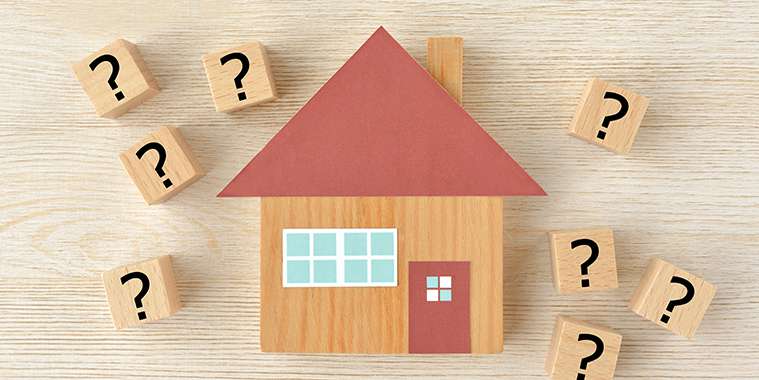As we mentioned last week, despite the abundance of information that’s out there about selling a home — along with numerous TV shows highlighting everything from flipping, renovating, buying and selling — many sellers still maintain a lot of old-school beliefs when it comes to putting their property on the market.
Don’t be one of them.
These beliefs can lead to a long and difficult process. When reality doesn’t meet expectations, the property might not sell as a result. So if you want to sell your home painlessly and quickly, here are five more outdated beliefs you need to do away with.
1. “Show me the money!”
You may still believe that whatever improvements you’ve put into your home automatically translates into a higher selling price. The reality is, the market will never pay you dollar for dollar for the improvements you’ve made, and some things might be too taste-specific to motivate a buyer to pay more.
Pools are a great example of this. It’s no secret that the cost of building a pool can easily hit $100,000 or more, based on size, the type of decking, screen, heater, whether or not it has an in-ground spa, etc.
Although a pool does provide some value, an appraiser will not add the cost that you incurred in building the pool to the overall value of the home. It may only be given a third or half of the price to build it, depending on what is typical for the area and the neighbourhood.
At a certain point, going over the top with renovations or additional features is not going to command a certain amount of money over the highest comparable sales. Although it might help the home’s appeal and overall marketability, the custom kitchen with taste-specific finishes — no matter how full of brand names it is — will not necessarily command a premium with buyers. The media room complete with projector and surround sound may not be something every buyer has to have — or even wants.
They’re nice to have, but some things — like fancy summer kitchens, fire pits and garage cabinetry — don’t guarantee a buyer is going to pay over what recently closed homes have gone for, plus or minus adjustments.
As a seller, it can be difficult to understand that what you feel contributes to the value of your home may be something that a buyer shrugs their shoulders at. Everyone has different priorities.
Last week we talked about 4 myths that sellers hang onto when selling their homes.
Despite the abundance of information that’s out there about selling a home — along with numerous TV shows highlighting everything from flipping, renovating, buying and selling — many sellers still maintain a lot of old-school beliefs when it comes to putting their property on the market.
Don’t be one of them.
These beliefs can lead to a long and difficult process. When reality doesn’t meet expectations, the property might not sell as a result. So if you want to sell your home painlessly and quickly, here are four more outdated beliefs you need to do away with
Here are four more myths a seller should probably let go of:
2. “More repairs?”
You may balk at the idea that a buyer might come at you with a repair request after a home inspection. You might argue that your home isn’t new, and if a buyer wants a new space, they should go buy one.
It can be difficult for if you’re selling your home to understand that if you won’t work with a buyer on repairs, you could easily lose them during the inspection contingency period. The added stigma of a home coming back on the market after inspections is never a good thing, and it tends to raise eyebrows as to what happened.
Another buyer will make an offer, negotiate and likely want to have their own inspections done. Unless your attitude shifts, the same thing might happen again. At a certain point, you may have to address the repairs in question, substantially reduce the price or give the buyer a closing cost credit in lieu of repairs.
Certain things may have to be addressed before closing, such as replacing an older roof, plumbing or electrical issues that could pose a health or safety concern as well as impact the buyer’s ability to obtain insurance.
3. “I can give a flooring allowance at closing!”
Speaking of repairs, it’s possible you think you can give an allowance toward the cost of replacing something that’s old or outdated in your home subject to an acceptable offer. Although the idea sounds practicable, this is very old-school thinking.
You can’t give a buyer a flooring allowance at closing as a part of the official closing process. Any concession granted from a seller to a buyer is best accomplished by the seller either by reducing the purchase price accordingly or paying a certain amount toward a buyer’s closing costs.
If a buyer is getting a loan, a lender won’t allow this to be handled any other way. In many cases, it may be easier for you to simply replace the carpet or upgrade the appliances before putting your home on the market.
4. “More marketing means more buyers willing to pay my price!”
When your home isn’t selling, you might be tempted to think you need more marketing. However, you often can’t really quantify what that means and don’t understand what tactics may or may not get tangible results.
Sometimes, you have outdated beliefs as to what should make the phone ring off the hook with buyers. (Making the phone ring is an outdated belief within itself since people engage with agents in all sorts of ways today.) Newspaper and magazine ads? Billboards? Flyers? Postcards?
Your REALTOR® can educate you about what marketing strategies and activities will work best with your property, and explain how it will be used to raise awareness and engage prospects. However, all the marketing in the world won’t attract the right buyers if your home is overpriced, doesn’t show well or looks unattractive in photos and video.
You may also think that the thousands of views your property garnered online should translate to numerous in-person showings. While tthose stats are encouraging, the number of views from various websites does not mean that every person who’s clicked on the listing is a ready, willing and able buyer.
People surf property websites from all over the world for various reasons. They might just be dreaming about the house they’re going to get “someday” rather than being actively in the market for one right now.
5. “Every buyer who sees my home must want to buy it!”
We wish. If only it were that straightforward. Some buyers are more specific and definitive than others. Some can articulate exactly what they want, while others have to use the property search to get some clarity on what’s important to them.
If the buyer is a couple, there’s a chance they might not be on the same page — which makes the house hunt all that more difficult. Also, buyers are in varying stages of their search. A buyer who is initially exploring an area is likely going to take more time compared to someone who’s familiar with it.
Some buyers are on shorter time frames to make a decision, while others might be planning on taking their time. While it would be great if every buyer that saw your house was ready, willing and able to buy it right this minute, the reality is, it’s typically a process of elimination.
The good news for sellers is that, given the current COVID-19 climate, buyers looking at homes for sale are likely more serious, ready, willing and able now compared to pre-pandemic times. Given what’s involved with showing properties today — safety precautions, travel restrictions, general hesitation and uncertainty — buyers are more focused on what they want. They’re making decisions in a shorter period of time.
People’s beliefs about real estate often stem from their own experiences, that of their family or friends, and of course what they see in the media, which tends to oversimplify a process that’s anything but simple. Outdated beliefs and misconceptions are common.
To ensure a successful outcome, talk to an experienced REALTOR® about the realities of selling a home in today’s climate.
— Realtor.ca



